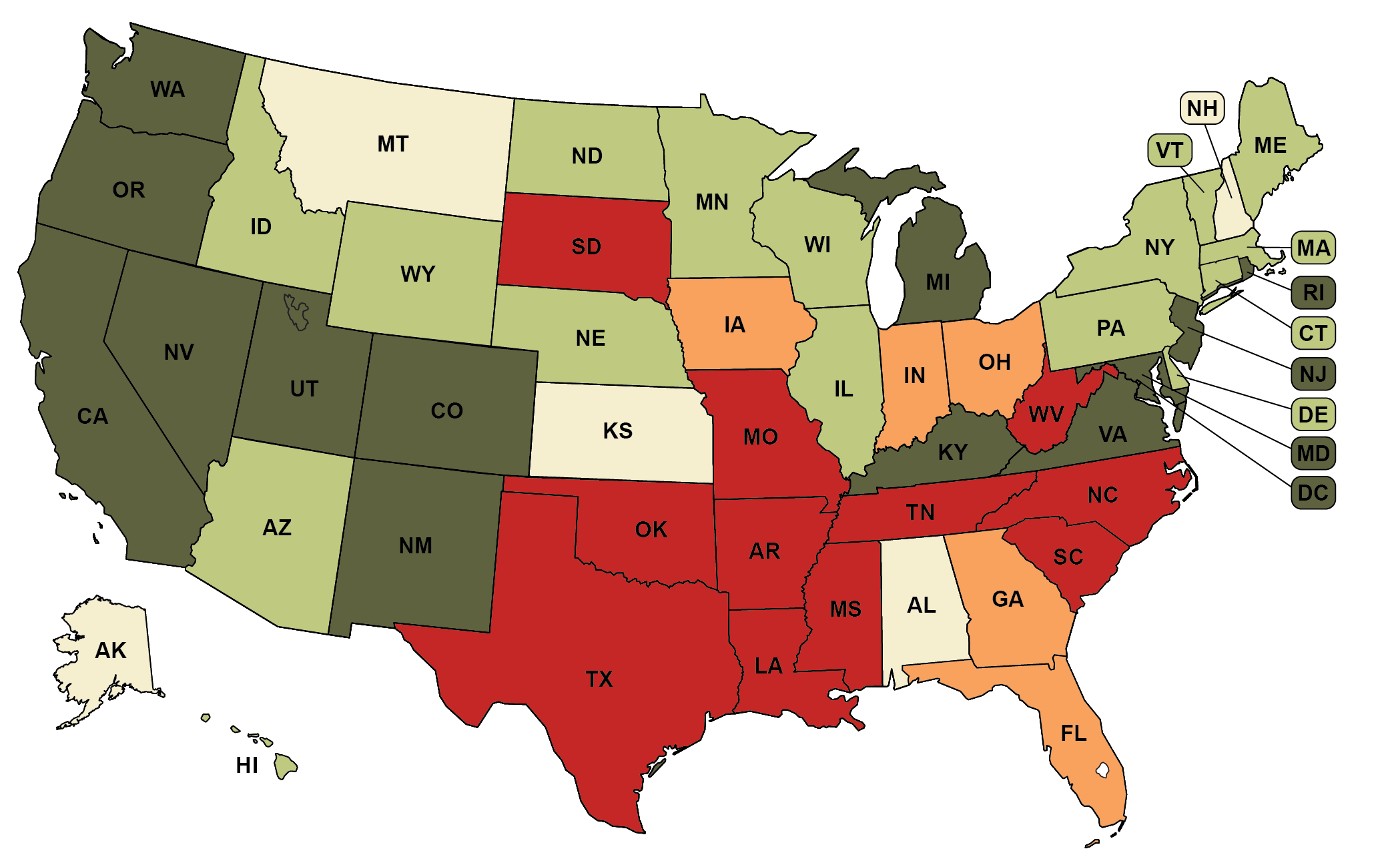In addition to returning absentee or mail ballots through the postal service, many states offer voters the option of returning their ballot to a secure drop box provided by election authorities. States take a variety of policy approaches to ballot drop boxes, with some states requiring or allowing they be broadly available statewide, while other states restrict or even ban the option. MAP defines “broadly available” drop boxes as those available 24 hours per day, not required to be staffed, and not limited in number.
-
Drop boxes required statewide and broadly available
(13 states + D.C.)
-
Drop boxes allowed statewide and broadly available
(16 states)
-
State has no applicable law or policy and drop boxes are not used
(5 states)
-
Drop boxes allowed statewide but restricted
(5 states)
-
State bans drop boxes
(11 states)
Recommended citation: Movement Advancement Project. "Ballot Drop Box Policies & Availability." https://www.mapresearch.org/democracy-maps/drop_box_policies. Accessed [day of access]
Breakdown by Population
*Note: These percentages reflect the voting-eligible population, as reported by the United States Election Project.
30 % of voting-eligible population lives in states where drop boxes required statewide and broadly accessible
26 % of voting-eligible population lives in states where drop boxes allowed statewide and broadly available
4 % of voting-eligible population lives in states that have no applicable law or policy and drop boxes are not used
17 % of the population lives in states where drop boxes are allowed statewide but restricted
23 % of voting-eligible population lives in states that ban drop boxes


